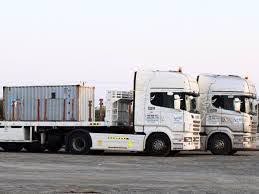Exploring Different Types of Lathe Cutting Tools: A Comprehensive Overview

Lathe cutting tools are essential components in machining processes, particularly in turning operations where material is removed to create cylindrical parts. These cutting tools come in various types, each designed for specific applications, materials, and cutting requirements. In this comprehensive overview, we’ll delve into the different types of lathe cutting tools, their functions, features, and typical applications in manufacturing and machining industries.
1. Turning Tools
Turning tools are the most common type of lathe cutting tools used for removing material from the workpiece during turning operations. They include:
· External Turning Tools: Designed for cutting the outer diameter of the workpiece. Examples include straight turning tools, profiling tools, and facing tools.
· Internal Turning Tools: Used for cutting internal features such as bores and holes. Internal turning tools include boring bars, internal grooving tools, and threading tools.
2. Parting Tools
Parting tools, also known as cutoff tools or grooving tools, are used to create parting-off operations where a workpiece is separated from the main stock material. Parting tools create narrow slots or grooves in the workpiece to facilitate the separation process.
3. Threading Tools
Threading tools are designed specifically for creating external or internal threads on cylindrical parts. They come in various types, including:
· External Threading Tools: Used for cutting threads on the outer surface of the workpiece. Examples include thread cutting tools, thread turning tools, and thread milling cutters.
· Internal Threading Tools: Designed for cutting threads inside bores or holes. Internal threading tools include tap tools, boring bars with threading inserts, and thread milling tools.
4. Grooving Tools
Grooving tools are used to create grooves, recesses, or lathe cutting tools types the workpiece. They are versatile tools that can be used for parting-off operations, creating grooves for O-rings, or forming decorative features on cylindrical parts.
5. Facing Tools
Facing tools are used to create flat surfaces or faces on the workpiece. They are often used at the beginning or end of turning operations to ensure the workpiece ends are flat and perpendicular to the axis of rotation.
6. Boring Tools
Boring tools are designed for enlarging or refining existing holes or bores in the workpiece. They come in various types, including:
· Standard Boring Bars: Used for general-purpose boring operations.
· Indexable Boring Bars: Equipped with replaceable inserts for cost-effective and versatile boring operations.
· Micro Boring Tools: Designed for precision boring operations with small diameters and tight tolerances.
7. Knurling Tools
Knurling tools are used to create textured patterns or knurls on the surface of the workpiece. Knurling improves grip, aesthetics, and functionality of cylindrical parts, especially in applications where a non-slip surface is required.
8. Specialized Tools
In addition to the standard lathe cutting tools mentioned above, there are specialized tools designed for specific applications and materials. These may include grooving inserts, parting inserts, threading inserts, and custom-designed tools for unique machining requirements.
Conclusion
Lathe cutting tools are essential components in turning operations, enabling the creation of precise, cylindrical parts in various industries such as automotive, aerospace, manufacturing, and engineering. Understanding the different types of lathe cutting tools, their functions, and applications is crucial for selecting the right tool for specific machining tasks and achieving optimal results in production processes. Factors such as material type, cutting requirements, tool geometry, and tool wear play a significant role in determining the most suitable lathe cutting tool for efficient and accurate machining operations.






